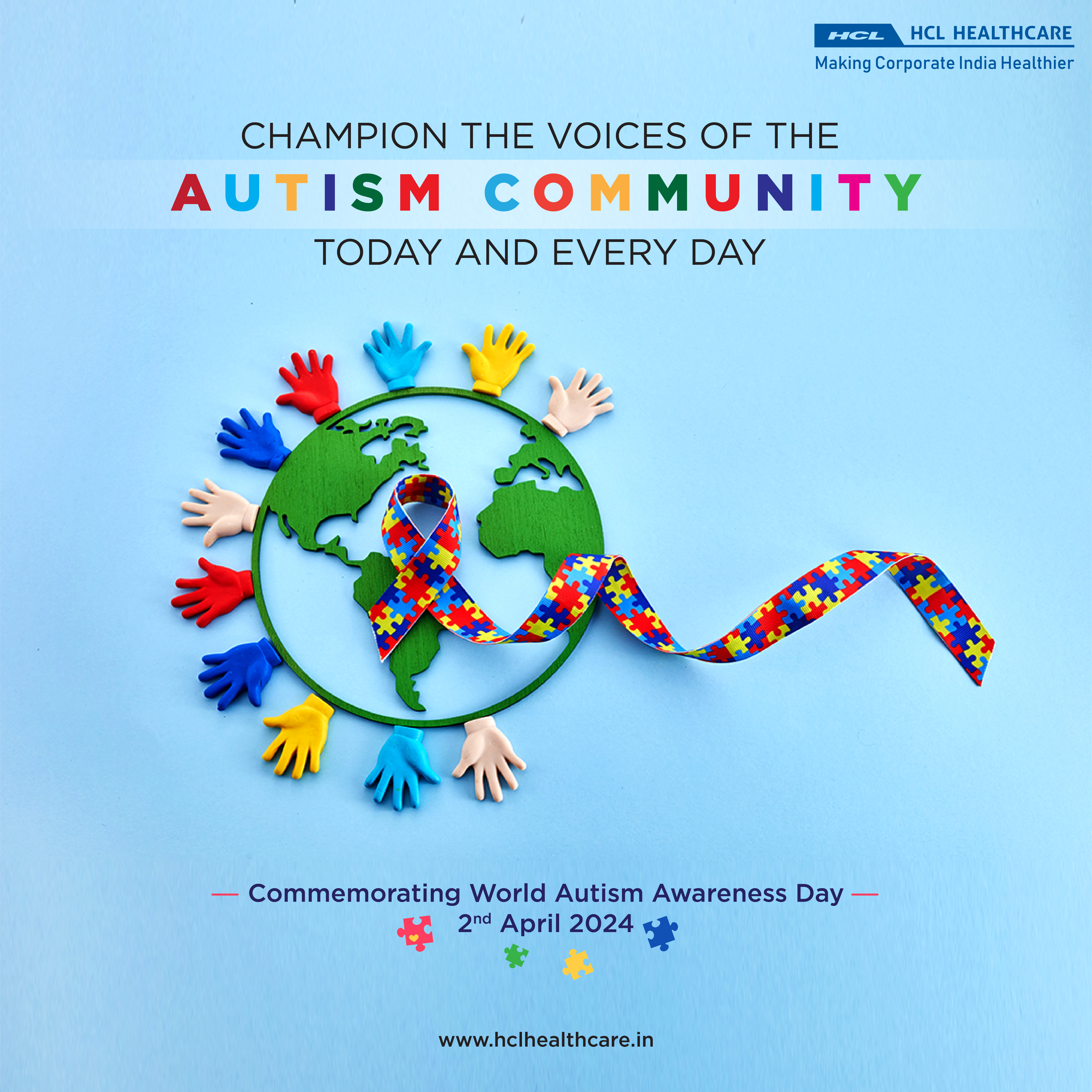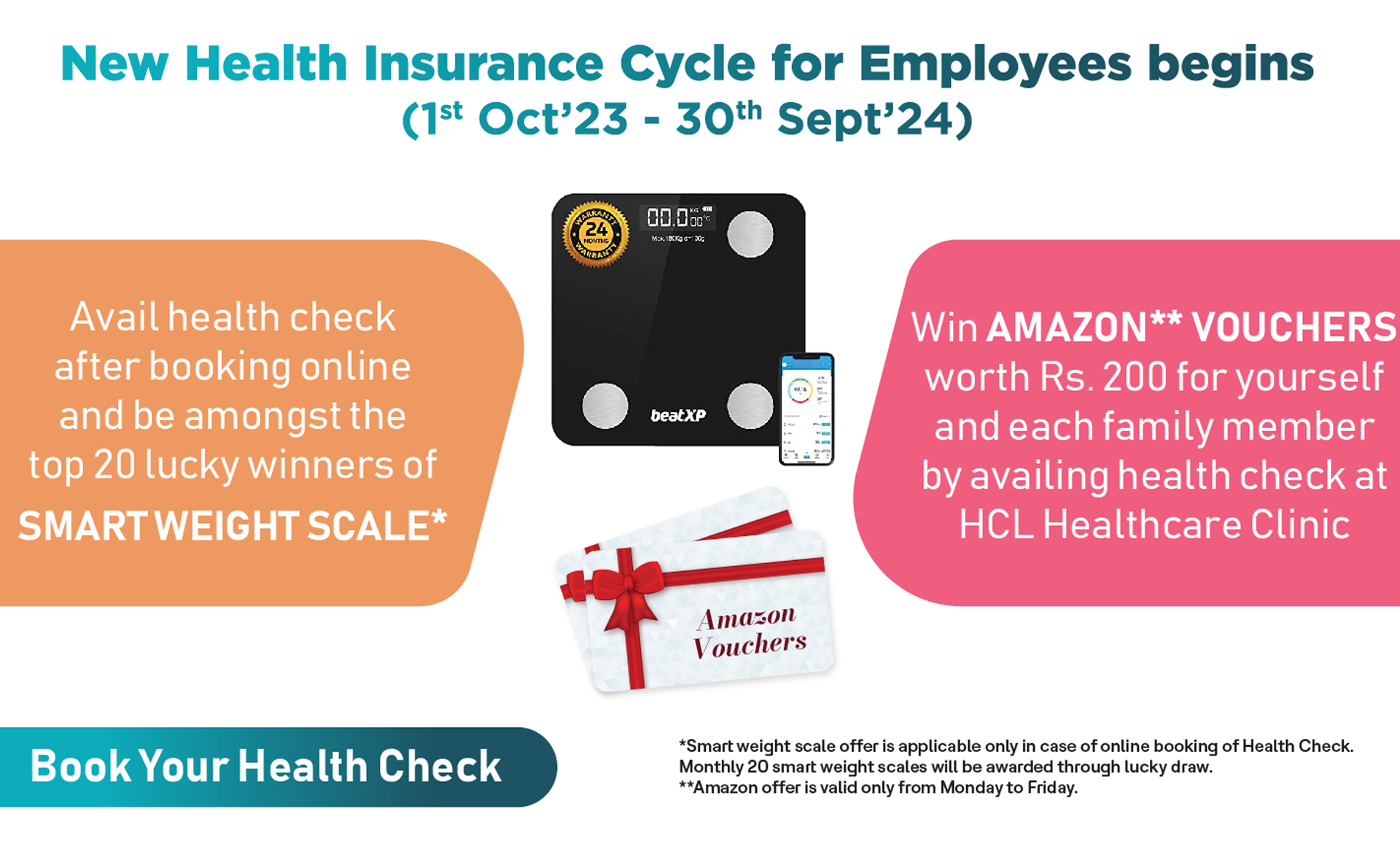Explore the importance of understanding and accepting autism, offering practical tips to support autistic colleagues and create an inclusive environment. Dive into the world of autism awareness and acceptance and discover how you can bring comfort and support to those with autism, fostering a culture where everyone thrives.
Imagine walking into a world where sounds, sights, and even the light touch of fabric feel intensely different. Where words get lost not for want of thoughts but because they simply can’t find their way out.
This world is a daily reality for approximately 18 million people in India diagnosed with autism, a spectrum of conditions that affects 1 to 1.5% of children aged two to nine years.
With the theme for World Autism Awareness Day 2024 being “Light It Up Blue,” it’s a global call to not just understand but truly accept and celebrate the unique perspectives and contributions of autistic individuals in every sphere of life.
This article aims to peel back the layers of autism, offering a glimpse into the minds of those on the spectrum and providing actionable steps for you to foster an environment of comfort, acceptance, and support. Are you ready to make a difference? Let’s dive in!
Fostering Autism Awareness and Acceptance
In a world rich with diversity, understanding and accepting autism stands as a beacon of empathy and inclusion. We need to understand that autistic individuals often bring remarkable skills to the table—be it an unparalleled focus, an exceptional memory, or a unique way of solving problems. By understanding their world, we can better support their integration into ours.
And for that to happen, improving acceptance for individuals with Autism Spectrum Disorder (ASD) is crucial for creating a more inclusive and understanding society. Here’s how we can all contribute to a more accepting and aware world.
- Practice Patience in Communication: If you’re conversing with someone on the spectrum who may need more time to respond, give them the space and time they need without pressuring them. This patience can make communication more comfortable for them.
- Create Sensory-Friendly Spaces: At home or in shared spaces, consider adjusting lighting, noise levels, and textures to create a more comfortable environment for individuals with sensory sensitivities. Simple changes, like using dimmable lights or having a quiet room, can make a big difference.
- Use Clear and Concise Language: When giving instructions or sharing information, be as clear and straightforward as possible. Avoid idioms or phrases that can be taken literally, which might confuse someone who interprets language more directly.
- Educate Your Circle: Share what you learn about autism with friends, family, and colleagues. Dispelling myths and spreading understanding can change attitudes and behaviors in your community.
- Offer Support in Social Situations: If you notice someone on the spectrum feeling overwhelmed or left out in social settings, gently offer your support or help them find a quiet place to regroup. Sometimes, just knowing someone is there to help can alleviate stress.
Every action, no matter how small, can make a big difference in fostering acceptance and understanding. Here’s a table offering communication tips that align with autism acceptance:
| Tip | Description | Example |
| Be Clear and Direct | Use straightforward language, avoiding idioms and metaphors. | Instead of saying "It’s raining cats and dogs," say "It’s raining very hard." |
| Allow Processing Time | Give time to process and respond to information without pressure. | After asking a question, wait patiently for a response without hurrying them. |
| Use Visual Supports | Support communication with visuals like pictures or written words. | Use a picture schedule to outline the day’s activities or tasks. |
| Avoid Sensory Overload | Minimize potential sensory triggers in the communication environment. | Lower the volume of background music during conversations. |
| Encourage Non-Verbal Communication | Support and understand gestures, sign language, or writing as valid forms of communication. | If speaking is difficult, suggest drawing or using gesture-based apps for communication. |
| Be Patient and Receptive | isplay patience and openness, valuing the effort to communicate. | If the person is taking time to form a response, nod encouragingly without interrupting. |
| Clarify Understanding | Confirm comprehension gently and clarify if there’s confusion. | After explaining something, ask "Does that make sense?" or "Can I explain this differently?" |
| Respect Personal Space | Recognize and adhere to the individual’s comfort with physical proximity. | Notice if stepping closer makes them uncomfortable and adjust by stepping back. |
| Adapt Your Communication Style | Alter your method of communication based on the individual’s preference and effectiveness. | If verbal instructions are misunderstood, try demonstrating the task or writing it down. |
| Foster a Judgment-Free Zone | Ensure they feel safe expressing themselves without fear of negative feedback. | Respond positively or neutrally to all attempts at communication, avoiding criticism. |
These tips aim to foster a more inclusive and understanding approach to communication, aligning with broader goals of autism acceptance.
How does Autism Awareness and Acceptance Help ASD Individuals?
Acceptance plays a pivotal role in transforming the lives of individuals with Autism Spectrum Disorder (ASD), initiating a positive shift that reverberates through their experiences and interactions. Here’s a concise overview of how acceptance fosters change:
- Adequate Validation of Their Condition and Emotions: Recognizing and validating the unique sensory and communicative experiences of individuals with ASD affirms their reality, encouraging a supportive atmosphere where their feelings are acknowledged without judgment.
- Improved Self-Acceptance, Confidence, and Mental Health: Acceptance nurtures self-esteem in people with ASD, enabling them to embrace their individuality. This bolstered self-image propels them to face new challenges and reduces feelings of isolation, anxiety, and depression.
- Better Relationships with Peers: Acceptance from peers enhances social inclusion, offering autistic individuals vital support, opportunities for emotional development, and a sense of community, facilitating a more understanding and inclusive society.
- Increased Quality of Everyday Life: When accepted, individuals with ASD experience fewer barriers to inclusion, receive necessary support, and feel valued within their communities. This leads to a more manageable daily life, allowing them to pursue their interests and contribute meaningfully to society.
In sum, acceptance is not just beneficial-it’s essential for enabling individuals with ASD to lead fulfilling lives, underscoring the importance of cultivating understanding and inclusivity at all societal levels.
Conclusion
In wrapping up our exploration of understanding and accepting autism, it’s clear that embracing individuals on the spectrum is not just about acknowledging their presence in our lives and communities.
It’s about actively participating in creating a world where comfort, acceptance, and support are the norms, not the exceptions. From the poignant insights into the inner experiences of those with autism to practical advice on promoting acceptance, every aspect underscores the importance of seeing beyond the diagnosis to the individual.











